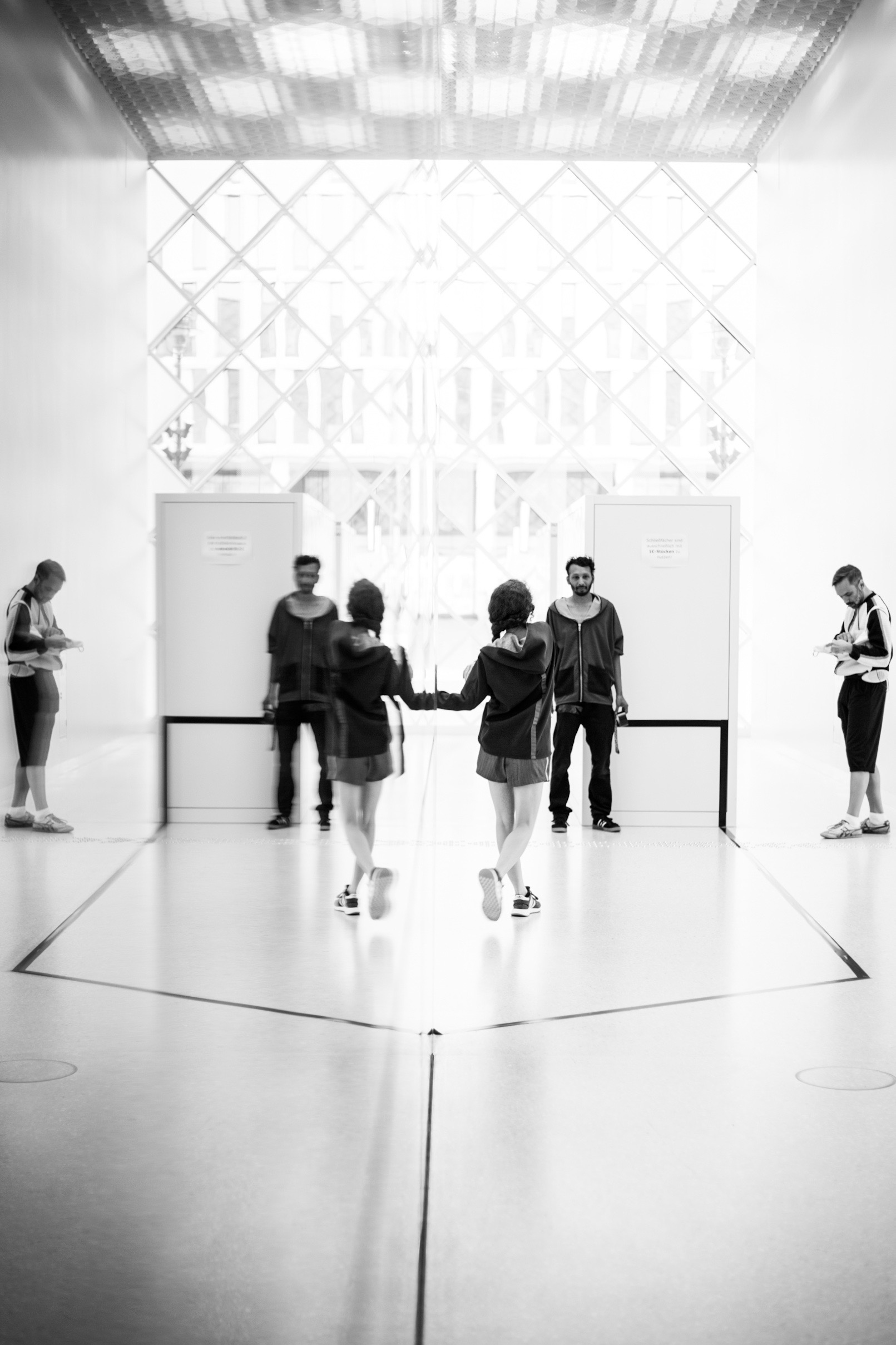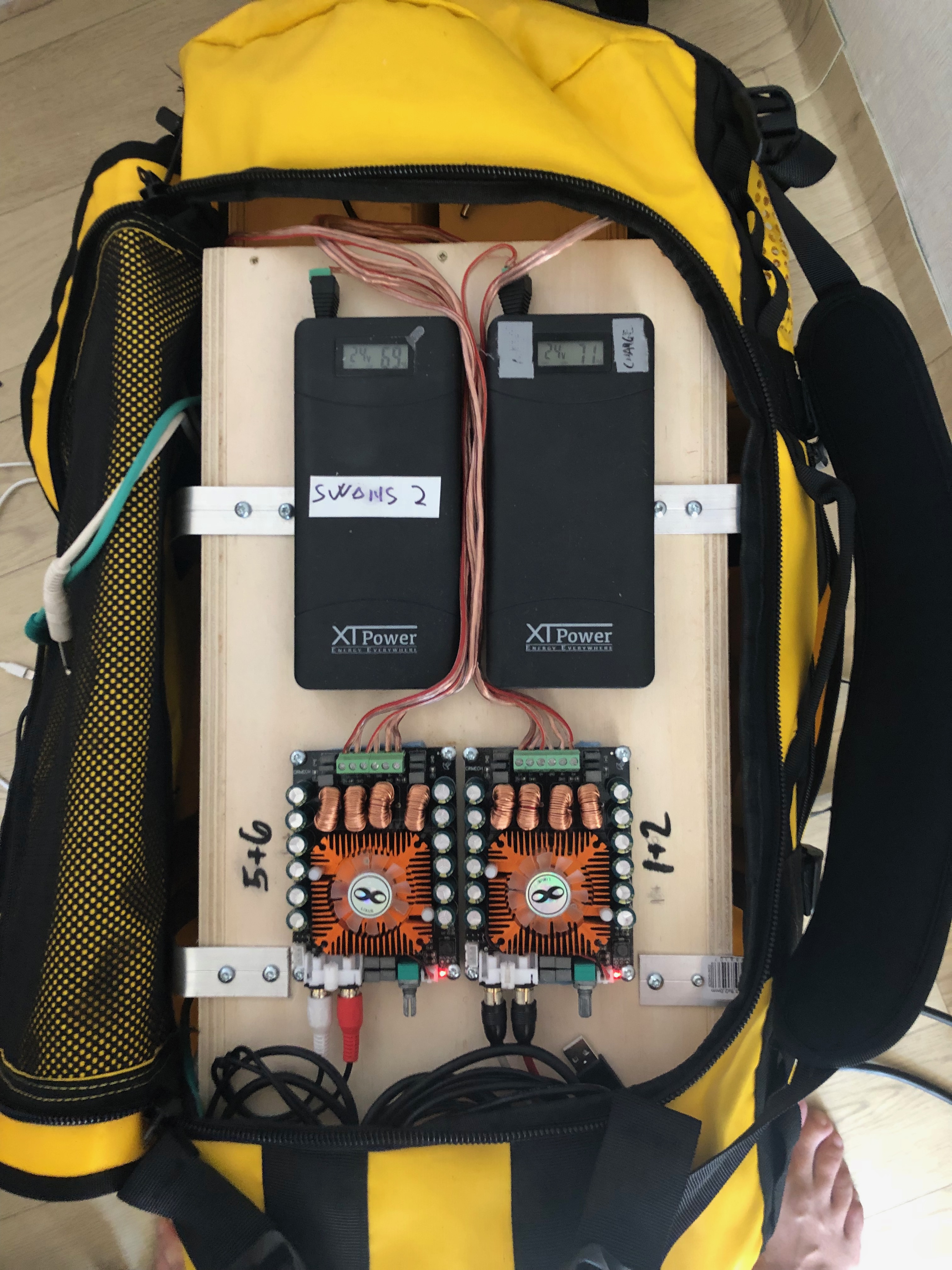Tape Riot
Site Responsive Sound Sculpting For Performance In Urban Space
Choreography: Anna Anderegg
Dancers: Adaya Berkovich, Laureline Richard
Sound Artist: Anders Ehlin
Tape Artist: Hervé Thiot
Site Responsive Sound Sculpting For Performance In Urban Space
Choreography: Anna Anderegg
Dancers: Adaya Berkovich, Laureline Richard
Sound Artist: Anders Ehlin
Tape Artist: Hervé Thiot
Tape Riot is a site specific performative intervention that merges with and challenges the structure and rhythm of a city. It consists of two dancers, a tape artist and a sound artist, and moves through both indoor and outdoor urban spaces, often several times during a single performance.





Anders Ehlin’s sound work for Tape Riot takes off from the virtual spatial premise created by tape artist Hervé Thiot. It re-imagines the sonic outlines of an entire city as well as its single parts at once, just like Thiot’s geometrical tape structures create temporary architectural trompe l'œil skylines on top of the existing buildings. It interjects itself between the dancers, the tape artwork, the audience and the surroundings, fluidly overlapping the space between improvised music, sound art and field recording practice.


DIY wireless speakers provide multichannel audio at times, immersing the often unassuming audience in surround sound. The satellites are planted pre performance or by in-audience crew, enabling a platform for playful mixing of realtime on-location recordings and electronic improvisation.
The sound work and spatialisation is made using an iPad with a selection of sound design and music production applications. During the performance the audience can fully submerge not only into a multidimensional visual experience, but also an augmented sonic and musical representation of the sounds that constitute the city. The sound improvisation utilises the reflections and reverberations from streets and buildings, constantly changing as the performance moves through the city landscape. It interjects itself between the dancers, the tape artwork, the audience and the surroundings, fluidly overlapping the space between improvised music, sound art and field recording practice.






Tape Riot questions and explores 3-dimensional urban space by constantly moving improvisation, driven by a push/pull dynamic between all its performing parts. It invites passers-by to follow or simply cross paths. Interacting with this never still-standing performance, the audience continually has to change positions, thereby redefining the urban space they often take for granted, together with the artists.


